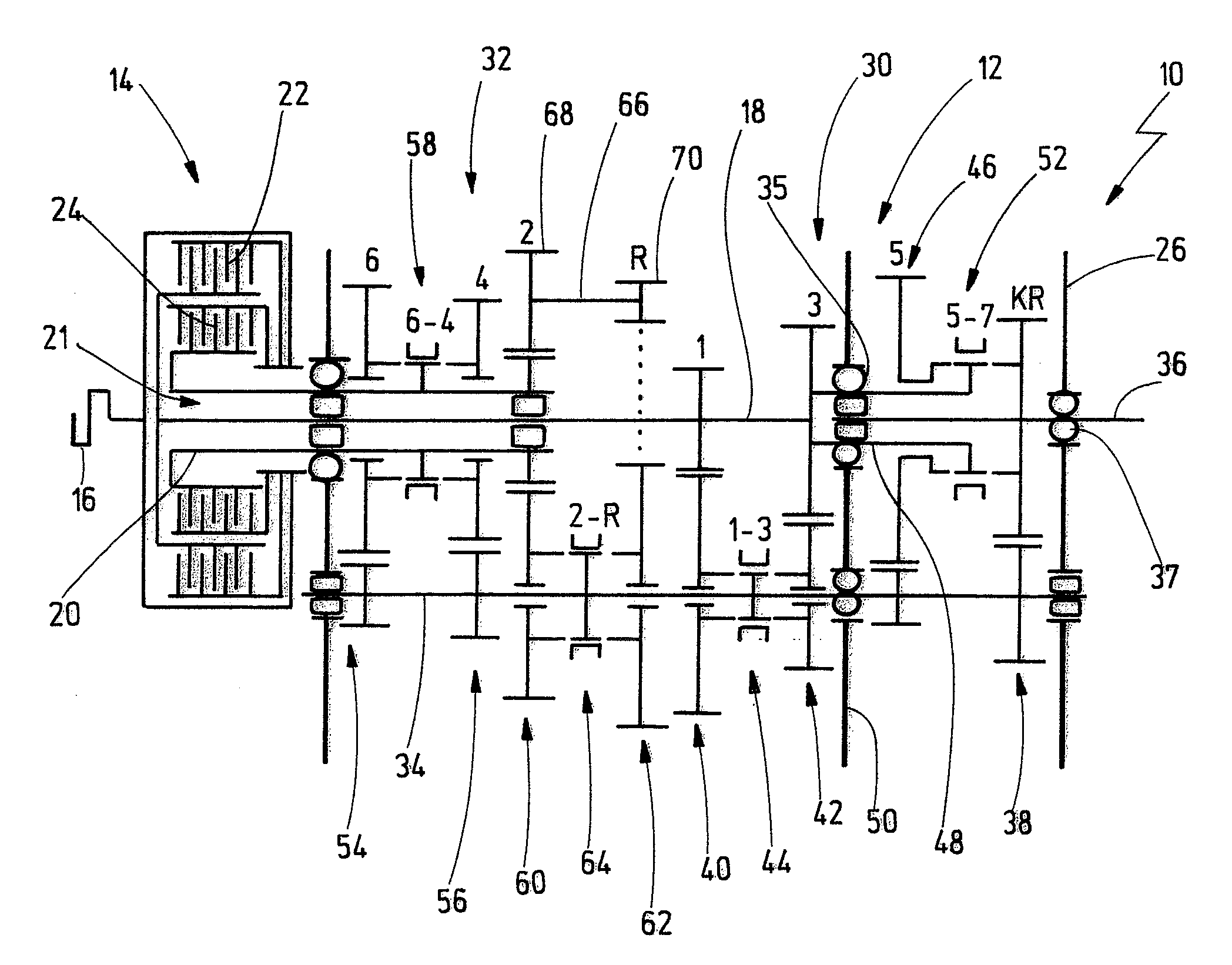Dual clutch transmission
a clutch transmission and clutch technology, applied in the direction of transmission elements, belts/chains/gearings, toothed gearings, etc., can solve the problems of increasing the rotational speed in the area of the countershaft, the relative high torque load of the countershaft, and the difficulty in rigid support of the constant output gear set, etc., to achieve the effect of small overall space and more difficult attachmen
- Summary
- Abstract
- Description
- Claims
- Application Information
AI Technical Summary
Benefits of technology
Problems solved by technology
Method used
Image
Examples
Embodiment Construction
[0041]In FIG. 1 a dual clutch transmission according to the first aspect of the present invention is generally denoted by 10.
[0042]The dual clutch transmission 10 comprises a step-variable transmission 12 of spur gear type and a dual clutch arrangement 14. An input member of the dual clutch arrangement 14 is connected to a schematically indicated drive engine, such as an internal combustion engine 16.
[0043]The step-variable transmission 12 comprises a drive shaft arrangement 21 with a first drive shaft 18 and a second drive shaft 20 in the form of a hollow shaft supported coaxially with the former.
[0044]The dual clutch arrangement 14 comprises a first clutch 22, the output member of which is connected to the first drive shaft 18. The dual clutch arrangement 14 further comprises a second clutch 24, the output member of which is connected to the second drive shaft 20. The clutches 22, 24 may be nested one radially inside the other, as shown, or lie axially in series. The clutches 22, ...
PUM
 Login to View More
Login to View More Abstract
Description
Claims
Application Information
 Login to View More
Login to View More - R&D
- Intellectual Property
- Life Sciences
- Materials
- Tech Scout
- Unparalleled Data Quality
- Higher Quality Content
- 60% Fewer Hallucinations
Browse by: Latest US Patents, China's latest patents, Technical Efficacy Thesaurus, Application Domain, Technology Topic, Popular Technical Reports.
© 2025 PatSnap. All rights reserved.Legal|Privacy policy|Modern Slavery Act Transparency Statement|Sitemap|About US| Contact US: help@patsnap.com


